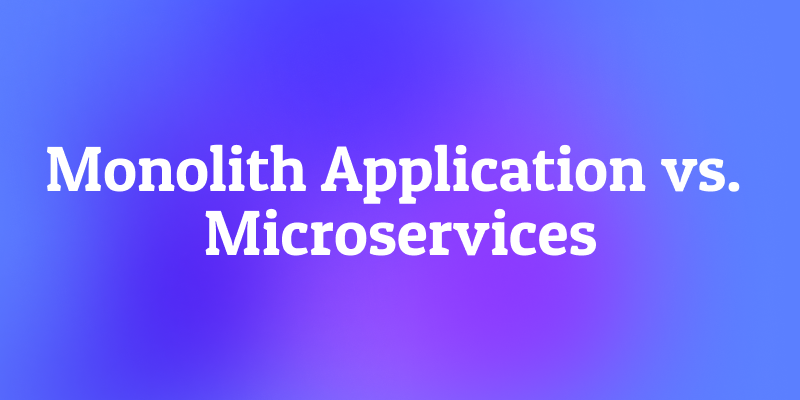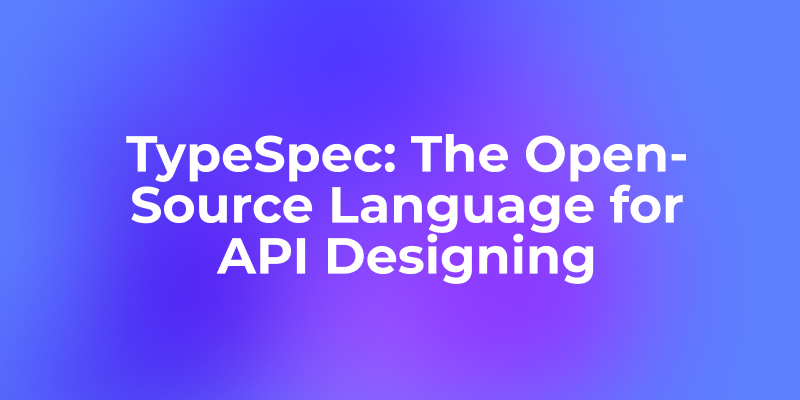As AI and large language models (LLMs) become core to modern apps, developers are increasingly working with AI APIs and endpoints that often rely on Server-Sent Events (SSE) for streaming real-time data. This brings unique challenges, particularly in AI request, testing, and LLM endpoint debugging.
Choosing the right tool to tackle this challenge is more important than ever. Two prominent players in the API development sphere, Apidog and Postman, both offer features for AI endpoint testing and SSE debugging. This article delves into a comprehensive comparison of their capabilities for AI request handling and SSE debugging, aiming to guide developers toward the more efficient and versatile solution.
Understanding AI Endpoint Testing and LLM Debugging
Before diving into tool comparisons, it's important to understand why AI endpoint testing requires a specialized approach. APIs for AI and LLMs often behave unpredictably, return streaming responses, and involve complex input-output patterns. Traditional API testing tools are often not equipped to handle this level of complexity.
Effective LLM debugging involves not just checking for successful responses but also understanding the flow of data, the coherence of streamed content, and the model's reasoning process where possible.
One key technology used in these AI applications is Server-Sent Events (SSE). SSE is particularly suited for generative AI, as it allows the server to push updates to the client in real-time—ideal for token-by-token response generation from LLMs.
To debug SSE streams effectively, tools must be able to:
- Maintain persistent connections.
- Display incoming events in real time.
- Parse and present streamed data in a human-readable format.
- Potentially merge fragmented messages into coherent responses.
The challenges in AI LLM API testing are manifold, ranging from managing API keys securely, crafting complex prompts, to interpreting lengthy, streamed responses. To overcome these hurdles, developers need purpose-built tools that streamline the process, improve clarity, and offer powerful debugging capabilities.
How Postman Handles AI Request and LLM API Testing
Postman, a widely adopted API platform, has introduced features to cater to the growing demand for AI endpoint request capabilities. It offers two main ways to work with AI endpoints: the "AI Request" block and the standard "HTTP Request" block.
Postman's "AI Request" Block: A Specialized Tool for AI Debugging
Postman's dedicated "AI Request" feature aims to simplify interaction with specific LLMs.
How it works: Developers can create AI requests within collections, select from a list of pre-configured AI models, manage authorization, and send prompts. The interface is designed to feel familiar to Postman users.

Supported Models: This feature is limited to official LLM APIs from a curated list of major AI companies. According to the available information, these include:
- OpenAI: GPT-4.5 Preview, GPT-4o, GPT-4o Mini, GPT-3.5 Turbo series, etc.
- Google: Gemini 1.5 Flash, Gemini 1.5 Pro, etc.
- Anthropic: Claude 3.5 Sonnet, Claude 3 Opus, Claude 3 Haiku, etc.
- DeepSeek: DeepSeek R1, DeepSeek V3.

Pros:
- Readable AI responses: One of the main benefits is that it displays AI responses in natural language. This makes it much easier to understand and interpret the output from supported models.
Cons:
- Very limited support: The biggest drawback is that it only works with a narrow range of AI endpoints.
- It does not support third-party platforms like OpenRouter and LiteLLM or custom deployments of DeepSeek.
- If you're using a unified API gateway or a self-hosted version of a model, this feature won't work at all.
Postman's "HTTP Request" Block for AI Request
When working with AI endpoints that aren’t supported by Postman’s “AI Request” block—or when you need to debug generic SSE streams—you can use Postman’s standard “HTTP Request” feature.
How it works: You simply set up a normal HTTP request and configure it correctly for an SSE (Server-Sent Events) connection. This typically means using the right HTTP method and adding headers like: Accept: text/event-stream.
Pros:
- Works with any SSE-based endpoint: This makes it useful for debugging most AI APIs that stream responses—such as those from platforms like OpenRouter.
Cons:
- Doesn’t handle AI endpoint using NON-SSE protocol well: Tools like Ollama, which stream responses using a non-SSE format, don’t work properly with Postman’s HTTP request block. It can’t capture their streamed output effectively.
- No live and no readable output: Postman doesn’t display streamed AI responses in a natural, human-readable format as they arrive. You’ll likely see raw, fragmented event data instead of a smooth, real-time message. This makes debugging LLM endpoint responses tedious and difficult to interpret.
The Bottom Line on SSE Debugging in Postman: When using the HTTP Request for SSE debugging, developers typically see a list of individual server events. While this confirms the connection and data flow, it lacks the immediate, coherent, and natural language output that is crucial for understanding an LLM's response as it's being generated. The "AI Request" feature improves on natural language display but is severely restricted in its applicability.
Apidog: A Powerful LLM API Client with Superior SSE Capabilities
Apidog, an all-in-one API development platform, positions itself as a strong alternative to Postman, particularly for AI debugging and LLM endpoint request scenarios, thanks to its robust HTTP Request feature designed with AI and SSE in mind.
Apidog's HTTP Request Feature: Versatility in AI/SSE/LLM Debugging
Apidog takes a unified and powerful approach by enhancing its standard HTTP Request functionality to intelligently handle various AI and LLM endpoint types.
How to test AI API endpoint in Apidog:
- Create a new HTTP project in Apidog.
- Add a new endpoint and enter the URL for the AI model's endpoint.
- Send the request. If the response header
Content-Typeincludestext/event-stream, Apidog automatically parses the returned data as SSE events.
Key Advantages for AI Endpoint Testing in Apidog:
- Universal LLM API Support: Apidog supports debugging any LLM API via its HTTP Request feature, regardless of whether the endpoints are from official providers (like OpenAI, Google) or unofficial/third-party providers (e.g., OpenRouter, custom-hosted models).
- SSE and Non-SSE Protocol Compatibility: It works seamlessly with endpoints using SSE or non-SSE protocols. This means Ollama's locally deployed open-source LLMs, which may not strictly use SSE, are also supported for streaming response debugging.
- Real-time, Natural Language Display: This is a standout feature. Apidog can display AI endpoint responses in real-time in the Timeline view, and crucially, in natural language. Users can see the LLM's response build up progressively, just as an end-user would.
- Auto-Merge Message Functionality: Apidog has built-in support for popular AI model response formats and can automatically recognize and merge streaming responses from:
- OpenAI API Compatible Format
- Gemini API Compatible Format
- Claude API Compatible Format
- Ollama API Compatible Format (JSON Streaming/NDJSON)
This ensures that fragmented messages are consolidated into a complete, readable reply.
- Markdown Preview: If the merged messages are in Markdown format, Apidog can even preview them with the right styles and formatting, offering a rich view of the final output.

- Customizable Merging Rules: If the Auto-Merge feature doesn't cover a specific format, developers can:
- Configure JSONPath extraction rules for custom JSON structures.
- Use Post Processor Scripts for more complex, non-JSON SSE message handling.
- Thought Process Display: For certain models (e.g., DeepSeek R1), Apidog can display the model's thought process in the timeline, offering deeper insights into the AI's reasoning.
The Bottom Line on SSE Debugging in Apidog: Debugging AI/LLM endpoints with Apidog is a significantly more intuitive and developer-friendly experience. The real-time, natural language, auto-merged, and potentially Markdown-previewed responses provide immediate clarity. The ability to handle diverse protocols and providers without switching tools or features makes Apidog a versatile powerhouse for AI LLM API testing.
Apidog vs. Postman: The Untimate Comparison for AI LLM API Testing
When it comes to AI LLM API testing, especially involving SSE or other streaming protocols, the differences between Apidog and Postman become stark. While Postman has made inroads with its "AI Request" feature, its limitations and the functional gaps in its standard HTTP Request for AI scenarios place it at a disadvantage compared to Apidog's comprehensive solution.
Here's a direct comparison:
| Feature | Postman (AI Request Block) | Postman (HTTP Request Block) | Apidog (HTTP Request Feature) |
|---|---|---|---|
| Supported LLM Providers | Limited (OpenAI, Google, Anthropic, DeepSeek - official APIs only) | AI API (via URL) | Any (official, unofficial, third-party) |
| Third-Party LLM Support (e.g. OpenRouter for GPT) | No | Yes (if SSE) | Yes |
| SSE Protocol Support | Yes (implicitly for supported models) | Yes | Yes |
| NDJSON/JSON Streaming | No | No | Yes |
| Real-time Response Streaming View | No | No | Yes (Timeline view, progressive update) |
| Natural Language Display | Yes (for supported models) | No | Yes |
| Response Merging | Yes (for supported models) | No (manual effort) | Yes |
| Customization of Response Handling | Limited to model settings | No | Yes |
| Markdown Preview | No | No | Yes |
| Ease of AI Endpoint Debugging | Moderate (if supported) | Low | High |
Analysis from a Developer's Perspective:
- Flexibility and Future-Proofing: The AI landscape is dynamic. Developers often need to test models from various sources, including smaller providers, open-source models run locally (like Ollama), or aggregated services like OpenRouter. Apidog's ability to handle any LLM API using any common streaming protocol (SSE or non-SSE) makes it far more flexible and future-proof. Postman's bifurcated approach (limited AI Request vs. less capable HTTP Request) creates friction.
- Debugging Experience: For LLM debugging, seeing the response build up in real-time, in natural language, is not a luxury but a necessity. Apidog excels here. Postman's HTTP Request offers a raw, disjointed view of SSE events, making it hard to assess the quality and coherence of an AI's output during an AI endpoint request.
- Efficiency: Apidog's auto-merging, Markdown preview, and customization options save developers significant time and effort. Manually piecing together streamed chunks or writing custom scripts for basic display in Postman (for its HTTP requests) is inefficient.
- Scope of AI Testing: Postman's "AI Request" feature, while offering natural language display, is too narrow in its supported models and provider types. It doesn't cover a vast range of AI/LLM APIs developers are likely to encounter. Apidog provides a consistent, powerful experience across the board.
While Postman is a capable general API platform, its current features for AI endpoint testing and SSE debugging feel either too restrictive or insufficiently developed for the specific needs of AI/LLM developers. Apidog, on the other hand, appears to have thoughtfully integrated features that directly address the pain points of AI request handling and LLM endpoint testing, offering a more powerful, flexible, and user- friendly solution.
Conclusion: Why Apidog Leads for Modern AI Endpoint Testing
In the specialized domain of AI endpoint testing and LLM debugging, particularly when dealing with Server-Sent Events and other streaming mechanisms, Apidog emerges as the more robust and developer-centric tool compared to Postman.
Postman's attempts to cater to AI developers, through its "AI Request" block and standard HTTP requests, offer some utility but are hampered by significant limitations. The "AI Request" feature's narrow scope of supported models and providers, and the HTTP Request's lack of real-time natural language display or sophisticated merging for AI streams, leave much to be desired. Developers using Postman for complex AI LLM model testing might find themselves navigating a fragmented and less intuitive experience.
Apidog, conversely, provides a unified and powerful HTTP request system that intelligently handles the diverse needs of AI debugging. Its support for any LLM provider, compatibility with both SSE and non-SSE protocols (crucially including tools like Ollama), real-time natural language display, automatic message merging, Markdown previews, and extensive customization options set it apart. These features streamline the LLM endpoint request process, making it easier to understand AI behavior, verify responses, and accelerate development cycles.
For developers seeking a tool that not only keeps pace with but also anticipates the needs of the rapidly advancing AI/LLM field, Apidog offers a compelling suite of features. Its focus on providing a clear, efficient, and flexible AI endpoint testing experience makes it the superior choice for professionals dedicated to building the next generation of AI-powered applications. If you're serious about AI debugging and want to enhance your productivity, delving into Apidog's capabilities is a worthwhile endeavor.



